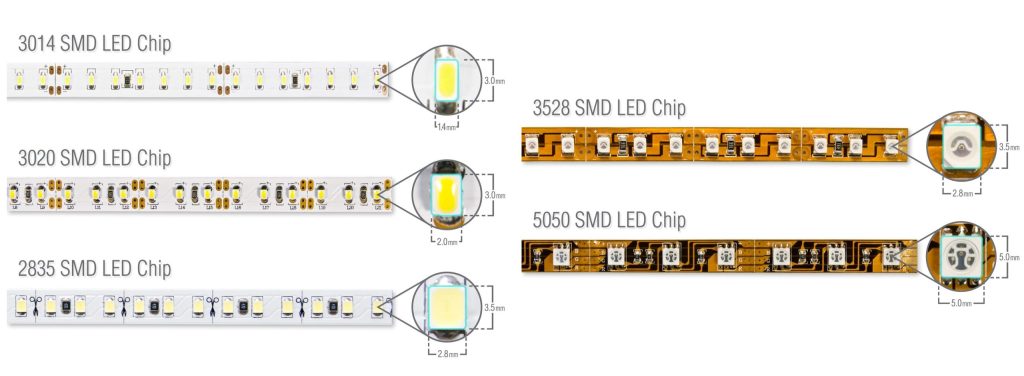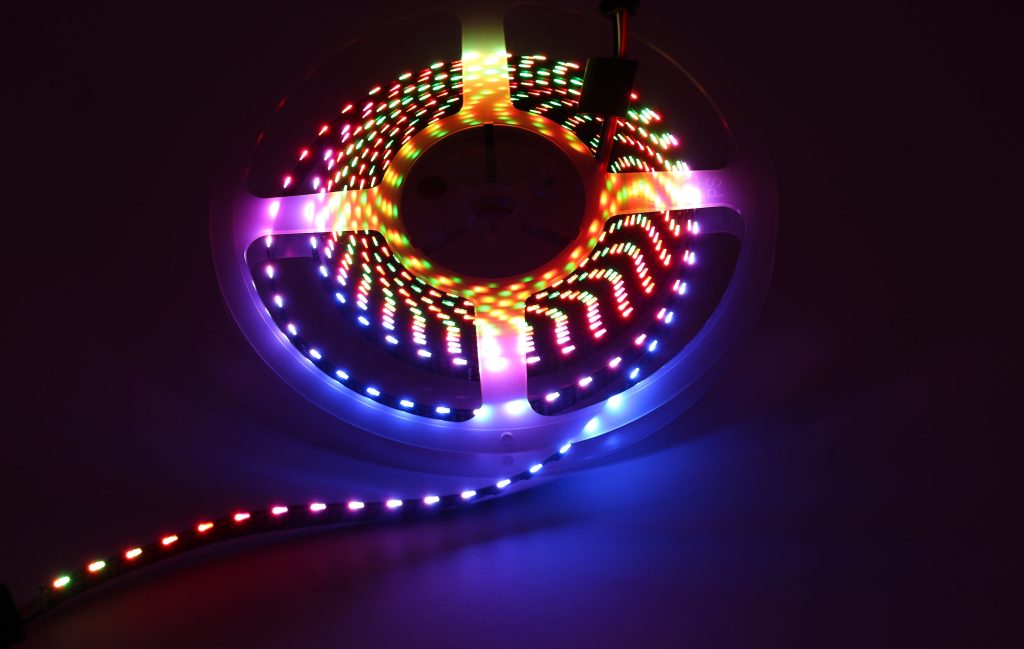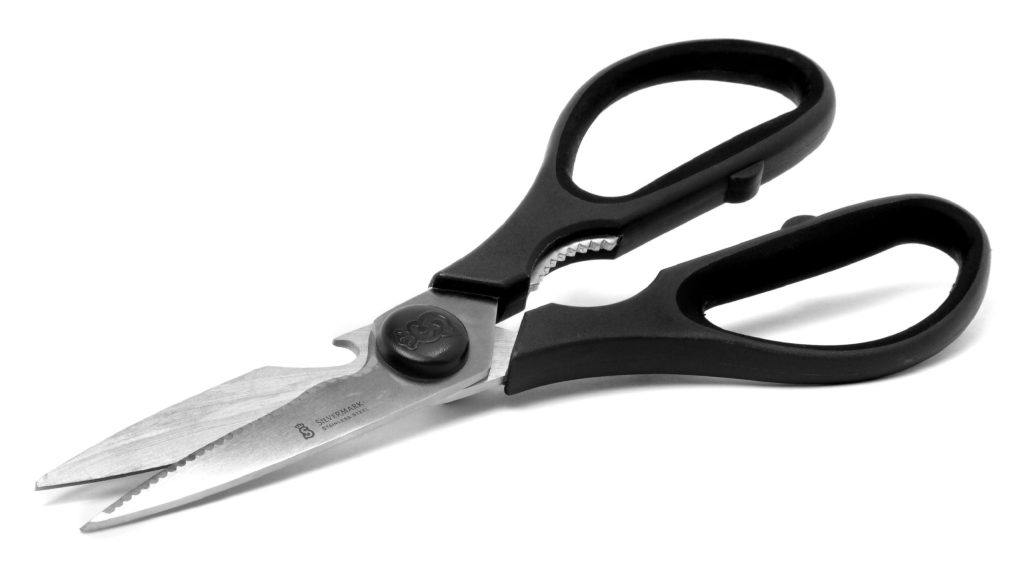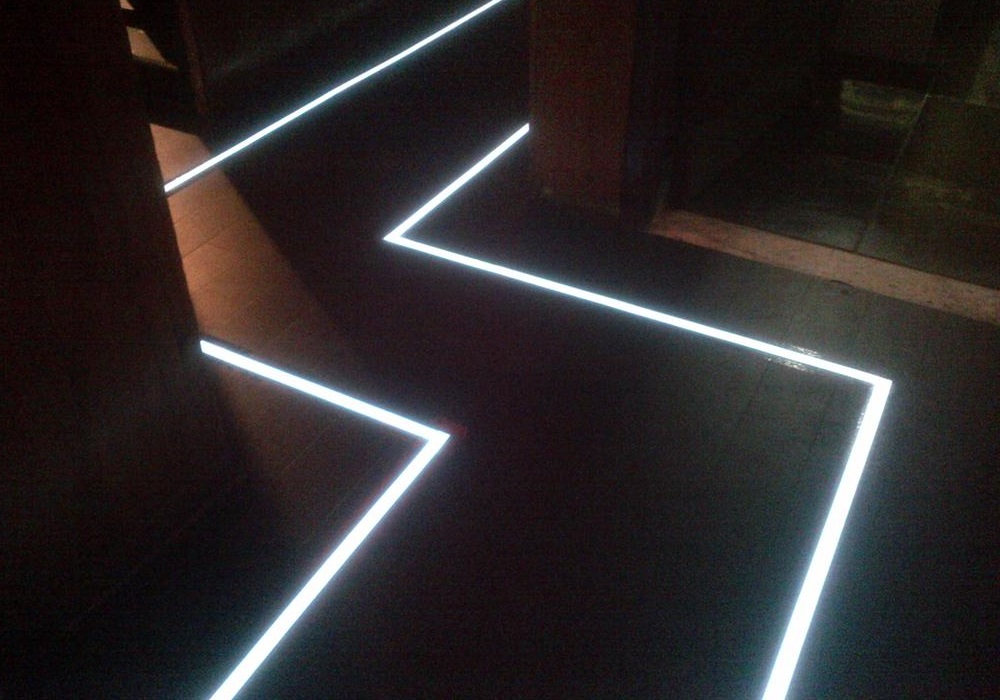An Easy Guide to Using and Reusing LED Strip Lights
The Bright World of LED Strip Lights: An In-Depth Overview
In the realm of both indoor and outdoor lighting, LED strip lights have emerged as an innovative solution. Offering a plethora of benefits, these versatile lighting options have found applications in various fields spanning from general home decor to specialized landscape lighting. But before we delve deeper into its diverse uses and advantages, let’s start with defining what LED strip lights are.
Demystifying LED Strip Lights: Definition and Basic Features
LED strip lights, also often referred to as tape lights or ribbon lights, are flexible circuit boards populated by surface-mounted light-emitting diodes (SMD LEDs) and other components that usually come with an adhesive backing. These compact yet powerful strips are designed for low-voltage operation, typically at 12V or 24V DC, which contributes to their safety and efficiency. They can be cut into specific lengths at designated points along the strip, making them highly customizable for different spaces.

The versatility of LED strip lights is further bolstered by their color-changing capabilities, dimming properties, IP ratings that determine their degree of protection against dust and water ingress, and varying densities of LEDs per meter/foot available, which impact brightness levels. These features combined make them a unique proposition in the versatile world of lighting solutions.
Shedding Light on Advantages: The Benefits
A principal advantage that sets apart LED strip lights from traditional lighting is energy efficiency. As they function on low-voltage power supplies, they consume less electricity than conventional light fixtures while providing similar or even heightened luminosity. Furthermore, they’re known for long-life operational hours, offering up to 50k hours or more depending on usage, making them cost-effective in the long run.
An added benefit lies within their flexibility – literally and figuratively! Their pliable design enables installation around curves and corners, allowing users to get creative with their lighting designs. This is particularly useful in applications such as under-cabinet lighting, cove lighting, and, yes, even the trending landscape strip lights.
Highlighting Uses: The Applications
The applications of LED strip lights are as wide-ranging as they are innovative. In residential settings, they can be used for accentuating architectural features, task lighting in workspaces, enhancing ambience in living rooms, or creating dramatic effects with landscape lighting outdoors.
Can LED Strip Lights Be Reused? Absolutely! Their flexible design and simple installation process allow for relocation or reconfiguration should the need arise. Commercial applications include lighting signage or display cases, highlighting products in retail stores, or setting the mood in restaurants and bars.
Furthermore, their use extends to the realm of the entertainment industry, where they are employed extensively in stage designs or film sets for creating various moods and effects. In this section, LED strip lights, with their inherent flexibility, energy efficiency, and wide spectrum of uses, have truly revolutionized the way we perceive light fixtures today.
Understanding the Different Types of LED Strip Lights
A Journey into the Luminescent Landscape of LED Strip Lights
In our quest to enlighten our world with flair and precision, understanding the types of lighting at our disposal is paramount. Among these, LED strip lights emerge as a versatile option, offering varying hues and brightness levels. There are principally four types of LED strips: single-color, red-green-blue (RGB), red-green-blue-white (RGBW), and addressable.
Single-Color LED Strips
The Simplicity and Elegance of Single-Color Lighting
Single-color LED strip lights are arguably the most basic yet elegant form. They emit one color consistently when powered on. These are ideal when a specific color palette is desired for ambient lighting or highlighting specific features in your decor.
Most frequently used single-color LEDs include warm white or cool white – perfect for classic landscape lighting that brings out the beauty in gardens or patios with subtlety. An interesting aspect about single-color LEDs is that they can be dimmed or brightened according to preference, thus offering control over light intensity without affecting their hue.
When considering whether these LED strip lights can be reused after installation, it’s important to note that they indeed can – if removed carefully with their adhesive backing intact. These LEDs can be replaced if required without changing the entire strip, which makes them an economical choice as well.
RGB (Red, Green & Blue) LED Strips
A Symphony of Colors at Your Disposal
For those seeking more diversity in their lighting scheme, red-green-blue (RGB) LED strips offer a dynamic solution. As implied by its name, each diode on these strips possesses three individual LEDs, where each emits red, green, or blue light. By varying the intensity of these three colors, one can create a veritable rainbow of colors.
RGB LEDs are a popular choice for landscape strip lights due to their flexibility. They can be programmed to change color in synchronization with music, time of day, or even mood. This customization potential makes RGB LED strips an exciting choice for those seeking interactive lighting solutions.
RGBW (Red, Green, Blue & White) LED Strips
Adding a Dash of Brilliance: The Fourth Color
In the world of LED strips, RGBW holds a special place. These are essentially RGB LED strips with an additional white LED incorporated into each diode. The presence of this fourth color broadens the spectrum considerably and allows for more precise color mixing and superior white light quality.
The addition of the white chip also improves the overall luminosity and energy efficiency, as less power is needed from the RGB components to produce certain shades. Consequently, they provide excellent landscape lighting solutions while offering striking brightness levels that enrich outdoor aesthetics.
Addressable LED Strip Lights
An Orchestra in Light: Synchrony and Individuality
We come upon addressable LED strip lights, an advanced form where each diode or cluster can be controlled individually by sophisticated controllers. They are programmable, allowing unique effects such as cascading colors or patterned sequences that ‘dance’ along your lighting layout – perfect for creating captivating landscape lighting displays.

Addressable LEDs open up unlimited possibilities for personal expression through light. While they may require more intricate installation procedures compared to other types due to their individual control mechanism, their versatility rewards the additional effort splendidly.
Essential Components for Using LED Strip Lights: The Trinity of Transformation
LED strip lights, whether utilized as primary lighting sources or for accentuating certain architectural features, are much more than just the light-emitting diodes (LEDs) mounted on a flexible circuit board. These sophisticated luminaries require certain peripheral components to function optimally. Let us delve into the essential components that are instrumental in setting up and operating LED strip lights effectively.
Power Supplies: The Lifeline of Luminescence
The first vital component in the triumvirate is the power supply, also known as a transformer or driver. This device ensures that your LED strip lights receive a stable flow of low-voltage direct current (DC) electricity.
Power supplies vary in wattage depending on their intended use. For instance, landscape lighting with LED strip lights may necessitate higher wattage power supplies due to their extensive coverage area and prolonged usage.
The size of your project will determine the type and capacity of power supply required. If you’re lighting an entire garden or yard using landscape strip lights, you’ll obviously need a larger power supply compared to someone who’s only looking to light up a small desk area.
Since LEDs are designed to operate at low voltage – usually 12V DC or 24V DC – it’s important that the output voltage from the power supply matches this specification. Exceeding this rating can shorten the lifespan of your LEDs, create safety hazards, and warrant questioning: Can LED strip lights be reused?
Controllers and Dimmers: Masters of Moods
The second element in this triad is the controller (also called the remote) and dimmer switch. Controllers allow users to manipulate parameters such as color temperature, brightness levels, static colors for single-color strips, or dynamic color-changing modes for RGB and RGBW strips.
Dimmers are a type of controller that specifically deals with adjusting the brightness levels of your LED strip lights. This tool is especially useful when creating different ambiances within a space. Landscape lighting, for instance, may require softer illumination during twilight hours and brighter lighting for late-night outdoor activities.
The versatility of controllers means they can range from simple handheld remotes to complex DMX controllers used in stage lighting. Some advanced models can even be synced with smartphone apps or voice-controlled smart home systems, granting you unprecedented control over your lighting environment.
Connectors and Wiring: The Veins of Versatility
The final component in our triad is connectors and wiring. These unsung heroes facilitate the interconnection between various strip sections, allowing them to form intricate designs or cover greater distances than a single strip could manage on its own.
Connectors come in different shapes and sizes based on functionality – some just connect two strips end-to-end, while others allow you to create corners or branch out into multiple directions. Some designs will also let you connect cut LED strip segments, answering the question: Can LED strip lights be reused?
The wiring of an LED strip light setup isn’t overly complex either, but it’s important to use wires that match the voltage requirement of your strips to ensure optimal performance. For larger projects such as landscape strip lights, using thicker gauge wire can help avoid voltage drop over longer distances, ensuring consistent brightness across all sections.
The Installation Process of LED Strip Lights: A Step-by-Step Guide
Planning Your Project: The Importance of Layout and Measurements
To ensure an efficient and seamless installation of your landscape strip lights, prudent planning is paramount. The significance of detailed preparatory work cannot be overstated. It forms the bedrock upon which the success or failure of your lighting project rests.
From accurately mapping out your layout to taking precise measurements, these initial steps are critical in avoiding any pitfalls or costly mistakes down the line. Measuring the required length for your LED strip lights is a crucial aspect in this planning phase.
This not only determines how many strips you need to purchase but also influences the overall aesthetic outcome. An overestimated measurement may lead to overly bright areas or an unnecessary increase in project cost, while an underestimated one could result in inadequately lit spaces.
To take accurate measurements, start by determining where you want your landscape strip lights to run through, then measure that pathway’s length using a measuring tape or laser measurer for more extensive spaces. Always plan some extra footage for flexibility and contingencies such as corners or unexpected obstructions.
Essential Tools for Installation: Necessities for Success
In addition to a well-thought-out plan and precise measurements, successful installation of LED strip lights requires having the right tools at hand. While many might overlook their importance, these instrumental aids foster efficiency and precision during installation.

The common tools needed include a pair of scissors for cutting strips at designated cut lines; a soldering iron and solder wire if any connections need to be made; wire strippers for preparing ends of cables; a screwdriver or drill for securing clips; a ruler or measuring tape for accurate placement; plus connectors if extending or bending around corners is necessary.
Adequately understanding the function of each tool is equally essential. For example, scissors are used specifically on designated cut lines only, ensuring that the strip lights’ circuit is not damaged. The soldering iron and solder wire come in handy if you need to create a secure connection between different strips or if you are connecting your strips to a power source directly.
Step-by-Step Guide: From Preparation to Attachment
Upon completing the planning phase and gathering all necessary tools, it’s time to delve into the actual installation process. The first step entails preparing your chosen surface area for landscape lighting. This preparation involves cleaning the surface area with a dry cloth to remove dust or any particles that may deter the adhesion process. For outdoor installations, ensure that surfaces are dry and free from any debris.
The attachment process commences once your desired area is prepared adequately. Begin by peeling off the adhesive backing from one end of your LED strip light, taking care not to touch the adhesive side, as this can reduce its sticking capability. Firmly press it onto your cleaned surface along your planned path, making sure it aligns perfectly with your previously taken measurements.
If necessary, grab those scissors and cut along designated lines on LEDs – this allows for better fitment around corners or shorter runs. Afterward, use connectors for any extensions needed or for going around corners easily without bending or damaging LED chips on the strip board.
Another question people often ask: Can LED strip lights be reused? Yes! They can easily be moved and reinstalled elsewhere as long as care is taken when removing them so as not to damage their circuitry or adhesive backing.
With these detailed steps in mind and careful execution of each stage of installation – careful planning, accurate measurement taking, tool readiness, surface preparation, and finally attachment – setting up landscape LED strip lights becomes a less daunting task, opening up a world of lighting possibilities.
How to Customize Your Lighting with Controllers
A Guided Tour through the World of LED Light Controllers
An integral part of LED strip lights customization revolves around controllers – the unsung heroes in your landscape lighting setup. Their primary role is to modulate the current feeding into your lights, thereby dictating color, brightness, and pattern. But not all controllers are born equal; some offer basic on/off functionality, while others let you choreograph a light show worthy of a Broadway stage.
The Basics: Simple and Efficient Controllers
Basic controllers are designed with simplicity and efficiency in mind. They typically come with an on/off switch and sometimes a dimmer. While they may lack the pizzazz of their more complex counterparts, they’re indispensable for tasks that demand consistency – think landscape strip lights lining your garden pathway or accentuating architectural features on your patio.
Can LED strip lights be reused? With basic controllers, indeed they can! Just remove them from one location, install them in another, connect to your controller, and voila! You have just extended their purpose and lifecycle.
Color Wizardry with RGB/RGBW Controllers
RGB and RGBW controllers are the magicians of our landscape lighting ensemble. These devices allow for mixing primary colors (red, green, and blue) at varying intensities to produce virtually any hue under the Sun – vibrant blues for cool vibes or golden yellows for a warm, comfy ambiance. The ‘W’ in RGBW stands for white – an addition that broadens this controller’s palette even further by offering pure white light or integrating it into other color patterns.
Enter Smart Homes: Wi-Fi/Bluetooth Controllers
In the age of the Internet of Things (IoT), even our landscape lighting isn’t spared from connectivity! Wi-Fi/Bluetooth-enabled controllers exude modernity and convenience. With these controllers, you can manipulate your LED strip lights right from your smartphone or voice assistant.
And the fun doesn’t stop at turning your landscape strip lights on and off remotely. You can also change colors, set timers, adjust brightness, and even synchronize your light show to music – all without leaving the comfort of your living room couch.
The Art of Programming: Customizing Light Effects
The true beauty of LED lighting lies in its infinite customizability – the ability to conjure a mesmerizing array of effects tailored to fit different moods or events. This art, however, demands some degree of controller programming. Don’t fret!
Programming here isn’t about wrestling with complex codes; it often entails a user-friendly interface where you choose colors, select patterns (like fades or strobes), adjust speed, and set timings. With some practice and patience, you will soon be painting your landscape with light in ways that reflect not only your style but also your ingenuity.
Maintaining Your LED Strip Lights
The Art of Cleaning: Prolonging the Lifespan of Your LED Strip Lights
As with any type of lighting, the lifespan and efficiency of landscape strip lights can be greatly enhanced through proper cleaning. Dust and grime can accumulate over time, reducing the light output, ultimately compromising the radiance these lights are capable of exuding. It is recommended to power down your LED strip lights before commencing any cleaning activity.

The use of a soft, dry cloth would suffice for an initial clean-up. For persistent dirt or residue, a damp cloth can be employed, but avoid using excessive water or harsh chemicals, as they may cause damage to the strips’ integrity. After cleaning, ensure that your landscape lighting strips are thoroughly dry prior to re-energizing them.
Take note that while it is advisable to clean your LED strip lights periodically, over-cleaning should be avoided as it could potentially lead to wear and tear. As such, observing a balanced cleaning regimen helps in maintaining their luminescent quality while extending their longevity.
In case you decide to shift your setup or replace old LEDs with new ones, you might wonder: Can LED strip lights be reused? The answer largely depends on how they were initially installed. If soldered connections were used instead of adhesive backings during installation, reuse may indeed be possible.
Troubleshooting 101: Common Problems Encountered with Landscape Lighting
LED strip lights have been lauded for their longevity and energy efficiency. However, like all technological contrivances, they are not impervious to occasional hitches.
Flickering or inconsistent brightness levels and shortened lifespan due to heat issues are among common challenges faced by users. Flickering often results from issues related to power supply or voltage drop across long runs of LEDs.
If you notice your landscape strip lights flickering, first check for any loose connections or wiring. If everything seems intact, the problem might lie with the power supply, which could be insufficient for your strip length.
Consider upgrading to a higher wattage power supply. A persistent inconsistency in brightness level across your LED strip may also be due to voltage drop. To mitigate this issue, powering your strips in parallel from the power supply or using a higher-voltage LED strip can establish uniform lighting.
Shortened lifespan due to heat issues is another concern with LED landscape lighting, especially when encased within an aluminum profile or used in high ambient temperature areas. It’s important to ensure sufficient ventilation and avoid overdriving LEDs beyond their rated current.
By understanding these common problems and their potential solutions, you will be better equipped to troubleshoot and rectify any issues that arise with your LED strip lights, ensuring their effective use for years to come.
The Luminary Landscape: A Recap on How to Use LED Strip Lights
As we reach the culmination of our enlightening journey through the world of LED strip lights, it’s essential to revisit the key themes and techniques we’ve explored. After all, every illuminating detail will contribute towards creating an enchanting aura at your desired place.
To harness the power of these versatile lighting solutions, first we delineated between various types of LED strips: single-color, RGB, RGBW, and addressable ones. Each type offers a unique color palette and potential for customization – the choice depends on your individual lighting needs.
We then focused on understanding the vital components required for using LED strip lights – power supplies, controllers or dimmers, connectors, and wiring. Ascertaining these elements is critical in ensuring a seamless setup process and further maintenance – be it landscape strip lights or indoor decorative lighting. In particular, controllers allow you to tailor your lighting experience with precision.
Following this, we elucidated upon a detailed guide for installing LED strips – be it as landscape lighting or otherwise. We emphasized that planning before execution is paramount to avoid any mishaps during installation. Furthermore, knowledge regarding crucial tools required can really augment your installation process by making it easier and more efficient.
But importantly, we dove into the topic of maintaining these magnificent light sources. Simple cleaning tips were shared, which can significantly prolong the lifespan of your LEDs, while troubleshooting pointers ensured you could handle minor issues like flickering light or heat issues independently.
Can LED Strip Lights Be Reused?
A commonly asked question lingered: Can LED strip lights be reused? The answer is Yes! With proper care and maintenance, such as keeping them clean from dust particles and monitoring their heat levels can help retain their longevity, thus enabling reuse.
Conclusion: How To Use LED Strip Lights?
As we conclude, remember that mastery over LED strip lights is not an overnight affair but a gradual process. With the knowledge from this guide and continual practice, you’ll be able to create enchanting lighting environments – be it for your living room or landscape lighting.
The future of lighting lies in LED strip lights, and with them at your disposal, your world can be as vibrant or as subtle as you desire. So go forth, experiment with these luminous wonders, and let every corner of your space glow with character.
You may also be interested in the following posts:
